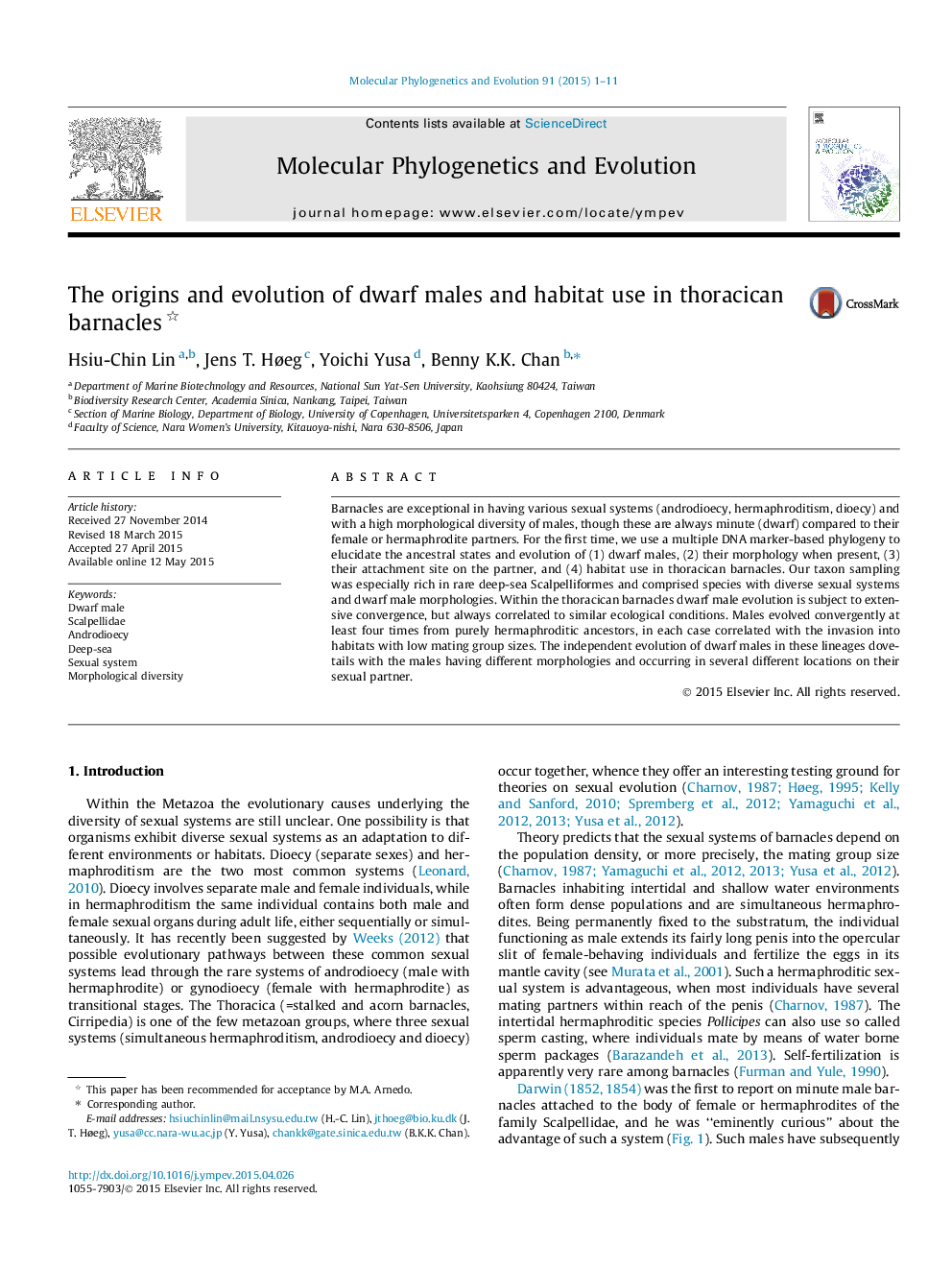| Article ID | Journal | Published Year | Pages | File Type |
|---|---|---|---|---|
| 2833776 | Molecular Phylogenetics and Evolution | 2015 | 11 Pages |
•Barnacles have various sexual systems and a high morphological diversity of the males.•A multiple DNA marker-based phylogeny was applied to reconstructed the evolution of dwarf males in barnacles.•Males evolved convergently from hermaphroditic ancestors, in each case correlated with habitat invasion.•Independent evolution results in males having different morphologies and locations on their sexual partners.
Barnacles are exceptional in having various sexual systems (androdioecy, hermaphroditism, dioecy) and with a high morphological diversity of males, though these are always minute (dwarf) compared to their female or hermaphrodite partners. For the first time, we use a multiple DNA marker-based phylogeny to elucidate the ancestral states and evolution of (1) dwarf males, (2) their morphology when present, (3) their attachment site on the partner, and (4) habitat use in thoracican barnacles. Our taxon sampling was especially rich in rare deep-sea Scalpelliformes and comprised species with diverse sexual systems and dwarf male morphologies. Within the thoracican barnacles dwarf male evolution is subject to extensive convergence, but always correlated to similar ecological conditions. Males evolved convergently at least four times from purely hermaphroditic ancestors, in each case correlated with the invasion into habitats with low mating group sizes. The independent evolution of dwarf males in these lineages dovetails with the males having different morphologies and occurring in several different locations on their sexual partner.
Graphical abstractFigure optionsDownload full-size imageDownload as PowerPoint slide
